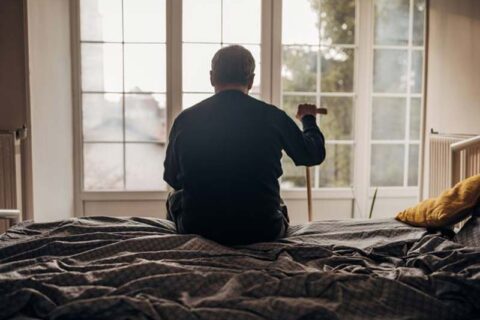What Types of Evidence Could You Use in an Elder Abuse Case?

Elder abuse occurs in various forms such as physical abuse, emotional abuse, neglect, and financial exploitation. This mistreatment not only causes significant physical harm but also leads to severe emotional and psychological distress, ultimately compromising the victim’s dignity and quality of life. When elder abuse happens, legal action can be the answer, like a lawsuit that demands justice and compensation.
For any lawsuit to gain traction, though, convincing evidence will be needed. What kind of evidence should you look for when you want to file an elder abuse lawsuit? There might be more forms available than you think.
Medical Records That Describe Physical Injuries
Medical records officially document the physical injuries and medical conditions that can result from elder abuse in nursing homes, providing objective evidence that can substantiate claims of abuse or neglect. Detailed medical assessments offer an overview of the abuse survivor’s health both before and after the harm, which can include psychological or emotional harm that is evaluated by a psychiatrist. Expert testimony from healthcare professionals adds credibility to the evidence, too, because medical experts can interpret the records and explain the correlation between the documented injuries and the suspected abuse. An elder abuse attorney can help your case by networking with medical experts who are willing to examine the evidence and testify.
Examples of medical records that could help your elder abuse case include:
- Emergency room reports
- Physician and nurse notes
- X-rays and diagnostic imaging results
- Medication administration records
Photographic & Video Evidence of Abuse
Photographs and videos are powerful tools in visually demonstrating the physical injuries suffered by victims of elder abuse, as well as exposing the unacceptable living conditions within nursing homes. Visual records provide undeniable evidence that can vividly convey the severity and reality of the abuse to a judge or jury, depending on how far the lawsuit goes. Photographs can capture bruises, lacerations, bedsores, and other visible signs of harm, while videos can show the day-to-day conditions and any incidents of neglect or mistreatment.
An attorney experienced in elder abuse cases can help procure security footage owned by the nursing home being sued. Otherwise, you might be denied access to such footage if you request it on your own.
Witness Testimonies & Statements
Witness testimonies from family members, friends, caregivers, and other acquaintances provide insightful accounts of the victim’s condition, behavior, and interactions with nursing home staff. Testimonies can offer detailed observations that complement the physical evidence, painting a fuller picture of the abuse or neglect endured by the elderly resident.
The importance of credible and consistent witness accounts cannot be overstated, though. A reliable testimony can strengthen a case by corroborating the victim’s experiences and demonstrating a pattern of mistreatment, but an unreliable testimony might have the opposite effect. Consistent and trustworthy statements from multiple witnesses can help establish a clear narrative of abuse.
Financial Records That Show Discrepancies
Financial records can reveal signs of financial exploitation or fraud in elder abuse cases while providing a clear, traceable history of the victim’s financial activities. Small discrepancies in these records, such as unusual withdrawals, unexpected charges, or sudden changes in financial habits, can be the first indicators that someone has accessed the account without permission or after coercing the elderly resident. By closely examining these documents, patterns of unauthorized transactions or financial decisions made under duress can be identified.
When looking for signs of financial abuse, you should check:
- Bank statements
- Transaction records
- Credit card purchase histories
- Financial agreements
Care Facility Records & Reports
Internal nursing home records can include indicators of elder abuse if you know how to look for them. Detailed accounts of incidents, staff activities, and the care provided to residents may reveal gaps in care, safety issues, and outright admissions of abuse or neglect. A law firm that focuses on elder abuse cases can assist you in obtaining these records, which may require legal action to compel the nursing home to release them.
Different internal nursing home records that could be useful to your elder abuse case are:
- Incident reports: An incident or accident report details a specific event in which a resident was harmed or put at risk, including falls, injuries, or any other unusual occurrences. Your attorney can check the history of incident reports to discover the frequency of unsafe situations, accidents, and resident injuries.
- Staff logs: Records of staff activities, shift changes, and interactions with residents can indicate whether the nursing home is adequately staffed. Patterns of negligence or misconduct may be identified by noticing which staff members are usually in the nursing home when an incident occurs.
- Resident care plans: A nursing home should have a care plan that outlines the daily care required for each resident, including medical treatments, dietary needs, and personal care routines. Deviations from these plans can signal neglect or inadequate attention to the resident’s needs. Of course, if no such plans are drafted at all, it could be a clear indicator of neglect.
Texts, Emails & Other Electronic Communications
Emails, text messages, and social media posts from the abused nursing home resident may include pleas for help or descriptions of mistreatment that provide direct insight into their experiences at the nursing home. Although, digital documentation is often harshly scrutinized because it can be difficult to prove who posted the content or that it had not been deceptively edited. An attorney can help with verifying the source and content of the messages when preparing a case to determine which posts, emails, or texts would help the client and which can safely be left out.
Want to Use Evidence? Talk to a Lawyer First
When it comes to preparing an elder abuse case with proper and convincing evidence, you won’t want to miss anything important. To get the help you need with evidence identification, collection, review, and use, turn to Law Office of Tom Wagstaff Jr., LLC in Kansas City. We proudly stand up for abused nursing home residents in Kansas and Missouri, as well as select cases nationwide. With decades of collective practice experience behind us and vast resources at our disposal, we’re ready to take any case, no matter how challenging or who the defendant might be.
For a FREE initial case review, call 816-708-0524 now.


